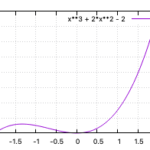next() を使う。
例
my_arr = ['春','夏','秋','冬'] my_iter = iter(my_arr) print(next(my_iter,'なし')) print(next(my_iter,'なし')) print(next(my_iter,'なし')) print(next(my_iter,'なし')) print(next(my_iter,'なし'))
結果
春 夏 秋 冬 なし
雑記
投稿日:2022年7月28日 更新日:
next() を使う。
my_arr = ['春','夏','秋','冬'] my_iter = iter(my_arr) print(next(my_iter,'なし')) print(next(my_iter,'なし')) print(next(my_iter,'なし')) print(next(my_iter,'なし')) print(next(my_iter,'なし'))
春 夏 秋 冬 なし
執筆者:seyanen
関連記事

ファイルを開くとき、「a+」を指定することで、data.txt というファイルを書き込みモードで開く。(もしファイルが存在していなければ作成する。) 例 f = open(‘data.txt’, ‘a …

破線をカスタマイズする方法 以下では、dashes = [5,2,2,2] で、線5・空白2・線2・空白2の破線を指定している。 詳しくは次を参照。 https://matplotlib.org/st …

matplotlib でグラフの背景の色を変える方法(facecolor)
次のように、axes で facecolor を変更すればよい。 例 from matplotlib import pyplot as plt x = [2,7,8] y = [7,1 …

2023/01/18
matplotlib のグラフ作成と gnuplot との対応 比較

2022/10/14
pythonで配列(リスト)の、ある要素がわかっているときにその次の要素を取得する方法。